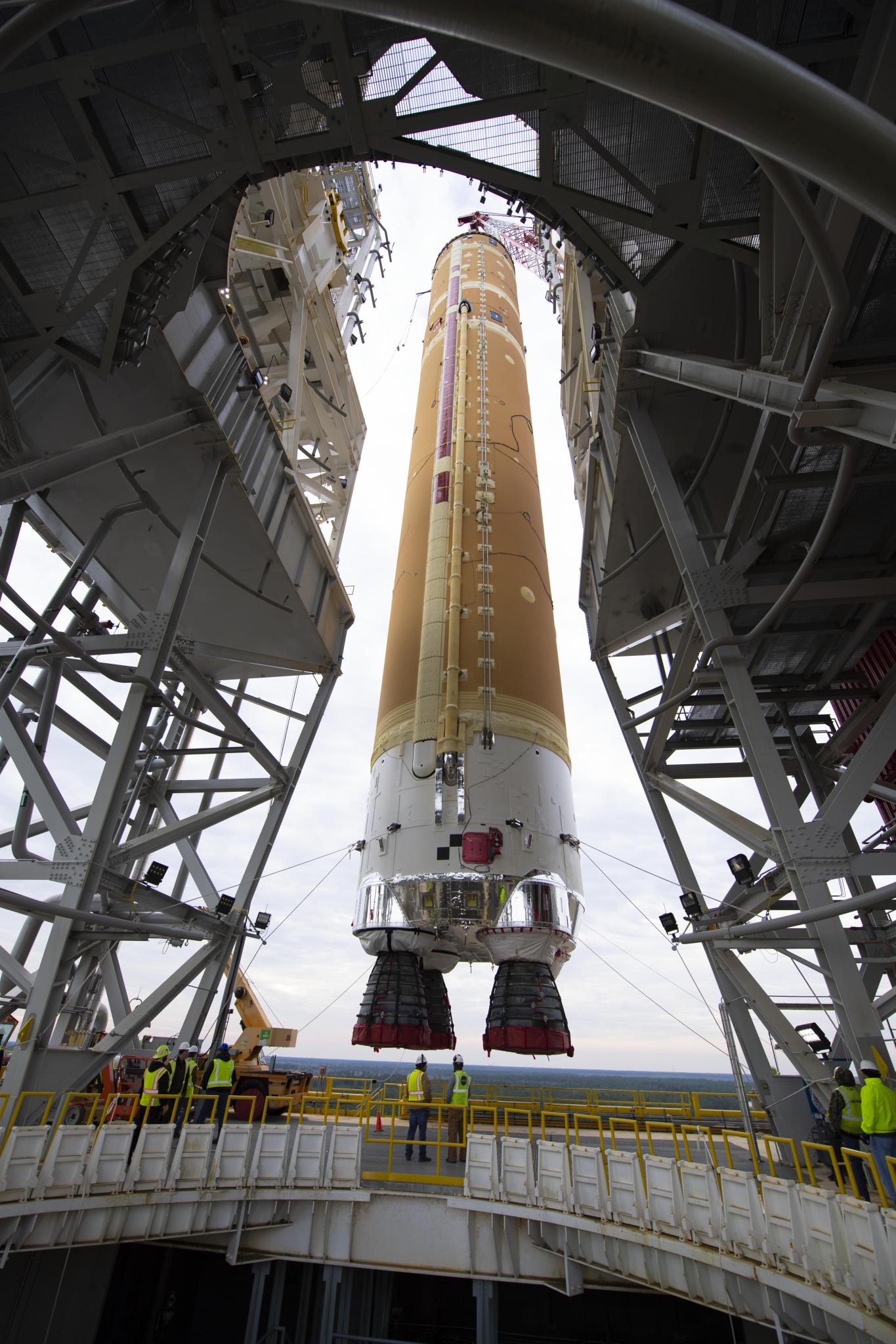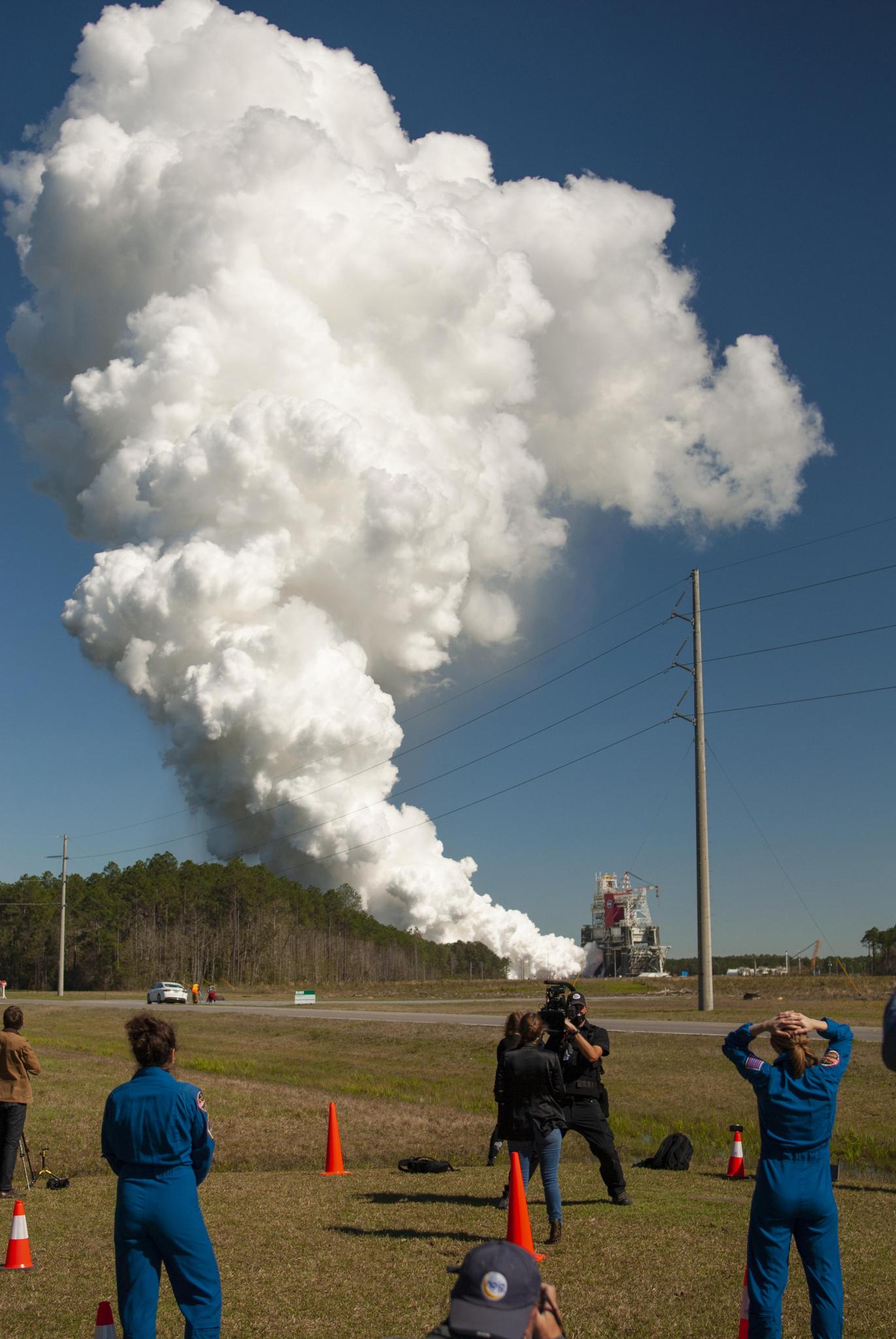4 min read
Note: The following article is part of a series highlighting propulsion testing at NASA's Stennis Space Center. To access the entire series, please visit: https://www.nasa.gov/feature/propulsion-powering-space-dreams/.

The future is now at NASA's Stennis Space Center near Bay St. Louis, Mississippi - at least when it comes to helping power the next great era of human space exploration.
NASA Stennis is contributing directly to the agency's effort to land the first woman, the first person of color, and its first international partner astronaut on the Moon - for the benefit of all humanity. Work at the nation's largest - and premier - propulsion test site will help power SLS (Space Launch System) rockets on future Artemis missions to enable long-term lunar exploration and prepare for the next giant leap of sending the first astronauts to Mars.
"We play a critical role to ensure the safety of astronauts on future Artemis missions," NASA Stennis Space Center Director John Bailey said. "Our dedicated workforce is excited and proud to be part of NASA's return to the Moon."
NASA Stennis achieved an RS-25 testing milestone in April at the Fred Haise Test Stand. Completion of the successful RS-25 certification series provided critical data for L3Harris (formerly known as Aerojet Rocketdyne) to produce new RS-25 engines, using modern processes and manufacturing techniques. The engines will help power SLS rockets beginning with Artemis V.
The first four Artemis missions are using modified space shuttle main engines also tested at NASA Stennis. For each Artemis mission, four RS-25 engines, along with a pair of solid rocket boosters, power the SLS rocket to produce more than 8.8 million pounds of total combined thrust at liftoff.
NASA's powerful SLS rocket is the only rocket that can send the Orion spacecraft, astronauts, and cargo to the Moon on a single mission.
Following key test infrastructure upgrades near the Fred Haise Test Stand, NASA Stennis will be ready for more RS-25 engine testing. NASA has awarded L3Harris contracts to provide 24 new engines, supporting SLS launches for Artemis V through Artemis IX.
"Every RS-25 engine that launches Artemis to space will be tested at NASA Stennis," said Joe Schuyler, director of the NASA Stennis Engineering and Test Directorate. "We take pride in helping to power this nation's human space exploration program. We also take great care in testing these engines because they are launching astronauts to space. We always have safety in mind."

In addition to RS-25 testing, preparations are ongoing at the Thad Cochran Test Stand (B-2) for future testing of the agency's new exploration upper stage. The more powerful SLS second stage, which will send astronauts and cargo to deep space aboard the Orion spacecraft, is being built at NASA's Michoud Assembly Facility in New Orleans.
Before its first flight, the NASA Stennis test team will conduct a series of Green Run tests on the new stage's integrated systems to demonstrate it is ready to fly. Crews completed installation of a key component for testing the upper stage in October. The lift and installation of the 103-ton interstage simulator component, measuring 31 feet in diameter and 33 feet tall, provided crews best practices for moving and handling the actual flight hardware when it arrives to NASA Stennis.
The exploration upper stage Green Run test series will culminate with a hot fire of the stage's four RL10 engines, made by L3Harris, the lead SLS engines contractor.
"All of Mississippi shares in our return to the Moon with the next great era of human space exploration going through NASA Stennis," Bailey said. "Together, we can be proud of the state's contributions to NASA's great mission."






